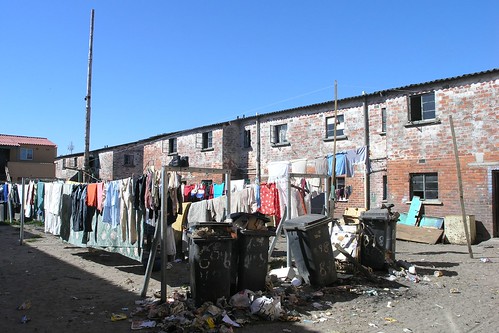A literacy success story
A success story of improving the reading and writing skills of learners is the Zimasa Community School in Langa, Western Cape. Having spent the weekend in Langa for the CSR in Education conference, I realised just how under-resourced most of the schools there are. The attendant ills of poverty are evident in Langa: overcrowding, litter, crime and lack of infrastructure. These factors make it difficult for teachers to deliver a sound education. Similarly, learners struggle to find the space and quiet to do their homework. Imaging trying to study for a test while living in a hostel originally designed for 16 men and now housing 16 families?

Hostels in Langa (Image by mtlp, CC-by-nc-nd)
Despite these difficulties, the principal and teachers of Zimasa Community School have managed improve the percentage of learners who achieved 50% or more in a literacy assessment from 8% (2005) to 40% (2008). That’s an increase of 32%! Or an increase of 400% on the baseline results.
Some of the contributing factors for the achievement include institutionalising reading and writing time in class, the school’s dedicated teachers, engaging parents around the learning needs of their children, and allowing learners to read, write and take the literacy test in their mother-tongue (mostly isiXhosa). (It’s not possible to tell if any of these is the dominant variable for the success.)
For the most part, education performance in SA (in fact, globally) is tied to socio-economic status. But it is success stories such as this that demonstrate that it is possible to significantly improve education performance despite difficulties.
Read more about this success story in The Teacher.



